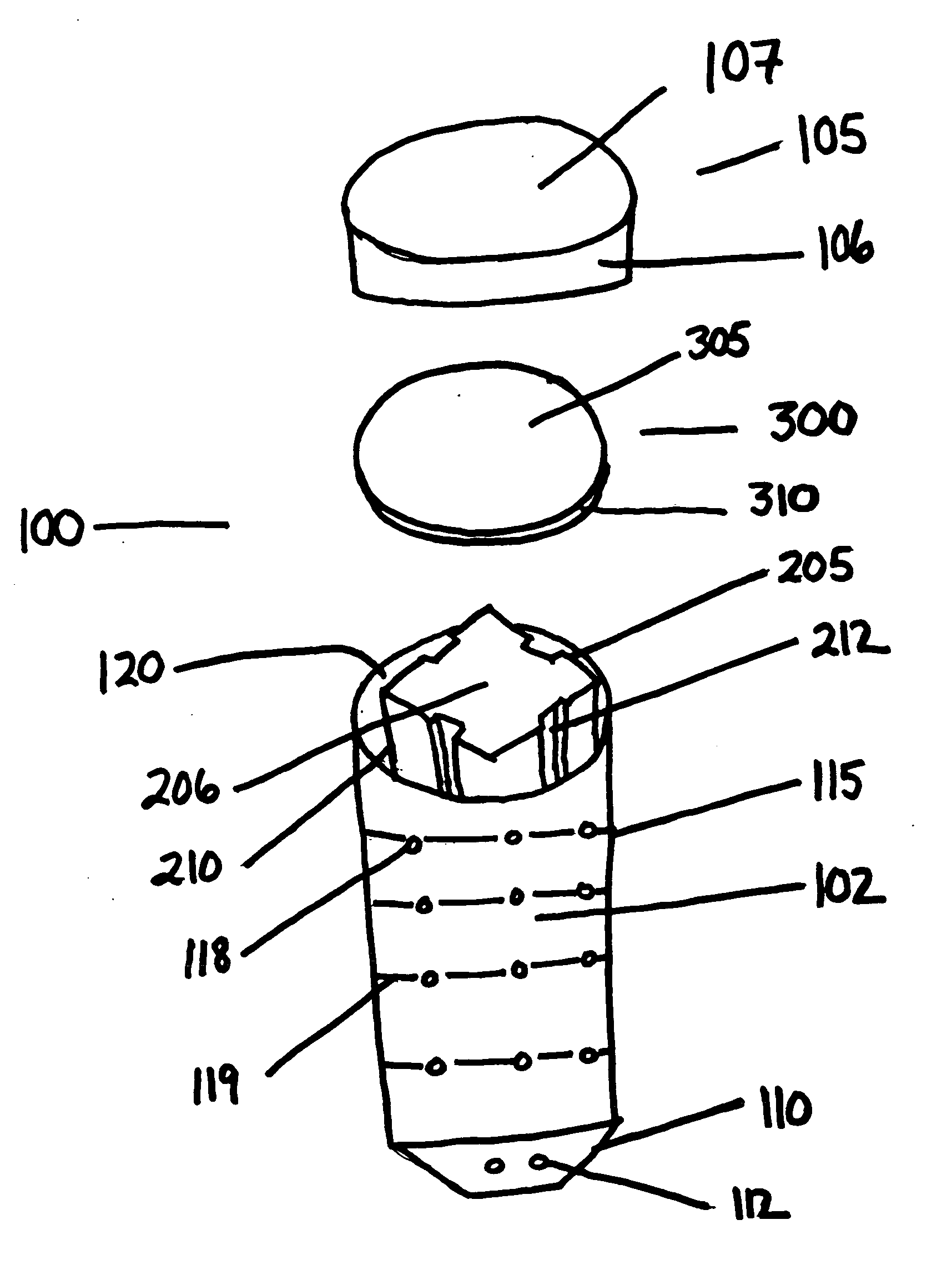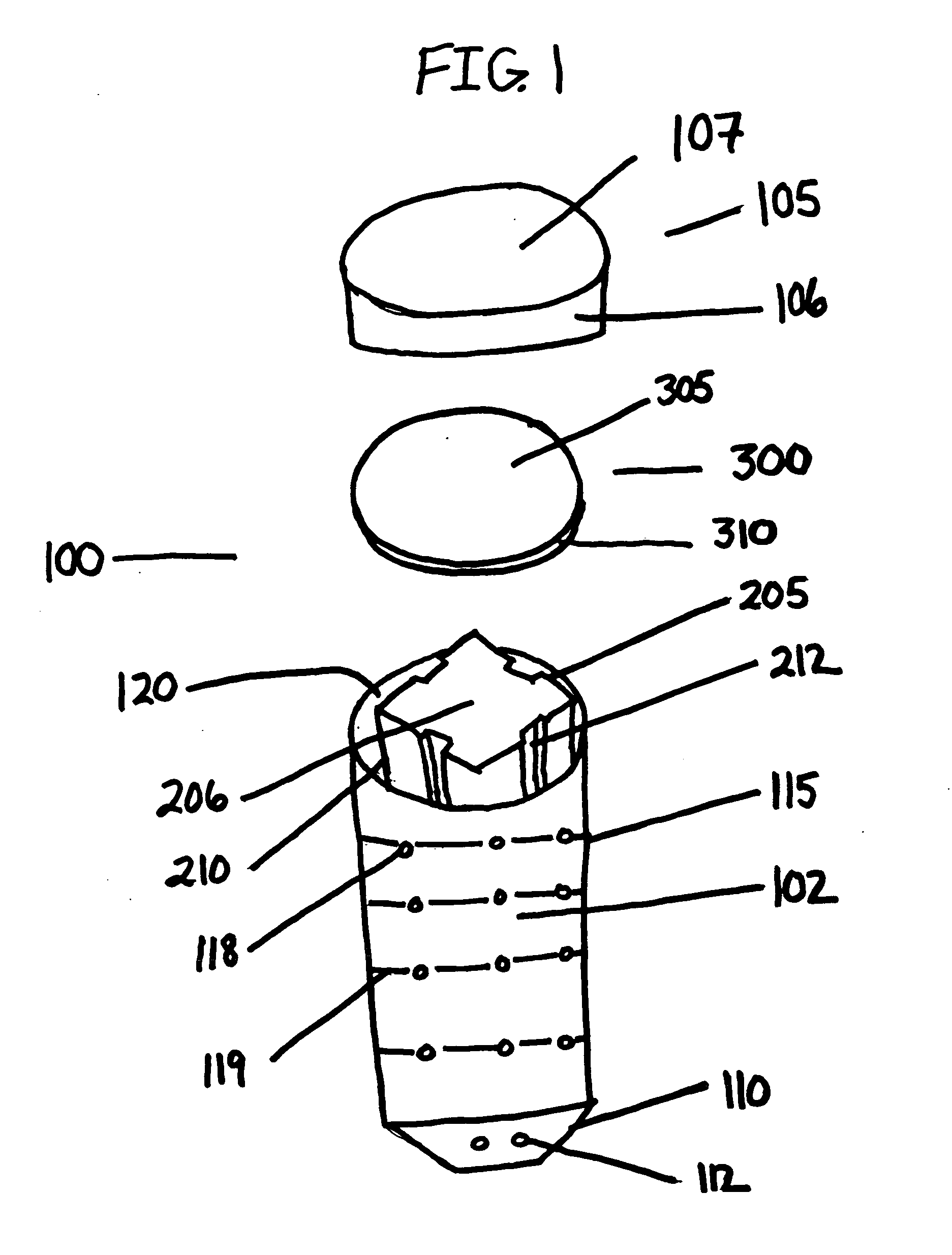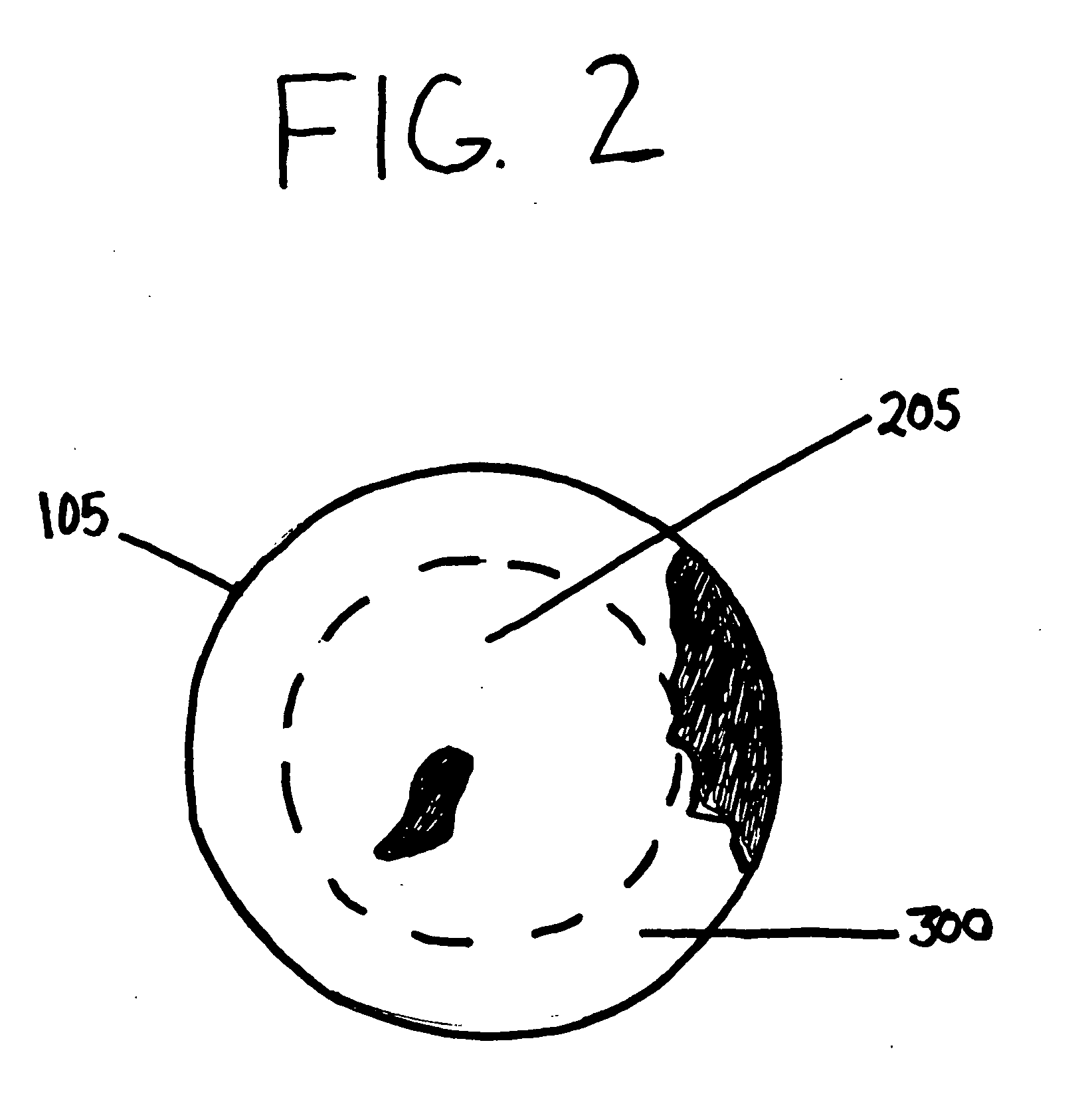Devices and methods for monitoring and/or controlling arthropods
a technology for arthropods and devices, applied in the field of monitoring and/or controlling arthropods, can solve the problems of bait stakes, insufficient barrier to termite infestation, labor-intensive treatment, etc., and achieve the effect of convenient and reliabl
- Summary
- Abstract
- Description
- Claims
- Application Information
AI Technical Summary
Benefits of technology
Problems solved by technology
Method used
Image
Examples
Embodiment Construction
[0014] The present invention provides stations and methods for monitoring arthropods. As used herein, the term “monitoring” is intended to mean watching, inspecting, observing, or checking a person or thing, particularly an arthropod such as a termite. Thus, a device that enables its user to simply determine whether or not termites are present in an area of interest is deemed to be a monitoring device, irrespective of whether or not that device enables its user to perform some additional task such as, for example, killing the termites.
[0015]FIG. 1 shows an exploded view of a preferred arthropod monitoring station 100 according to the present invention comprising a housing 102 having a first end 105, a second end 110, and a lateral wall 115 extending between said first end and said second end. As shown in FIG. 1, first end 105, second end 110, and lateral wall 115 substantially define an interior portion 120 of said housing. Preferably, at least one of the ends 105 and 110 is remova...
PUM
 Login to View More
Login to View More Abstract
Description
Claims
Application Information
 Login to View More
Login to View More - R&D
- Intellectual Property
- Life Sciences
- Materials
- Tech Scout
- Unparalleled Data Quality
- Higher Quality Content
- 60% Fewer Hallucinations
Browse by: Latest US Patents, China's latest patents, Technical Efficacy Thesaurus, Application Domain, Technology Topic, Popular Technical Reports.
© 2025 PatSnap. All rights reserved.Legal|Privacy policy|Modern Slavery Act Transparency Statement|Sitemap|About US| Contact US: help@patsnap.com



